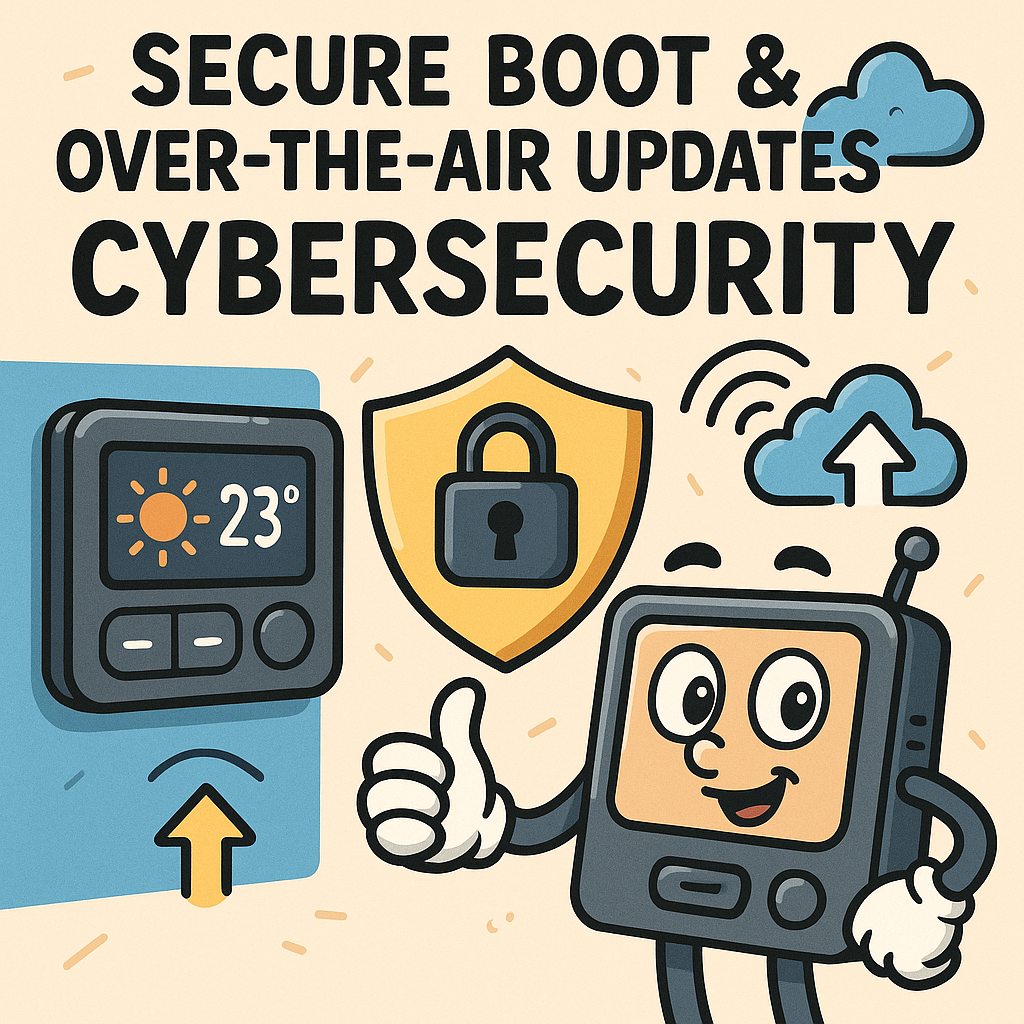Understanding the Importance of Secure Boot for Smart Thermostats
As the world becomes increasingly interconnected, the need for robust cybersecurity measures in smart home devices has never been more critical. Smart thermostats, often overlooked in discussions about security vulnerabilities, are prime targets for cyberattacks. This is where the concept of Secure Boot becomes vital.
Secure Boot is a security standard that ensures a device only boots using software that is trusted by the manufacturer. When implementing Secure Boot in a smart thermostat, the device’s firmware is cryptographically signed, meaning it can only be executed if the signature matches the one stored in a secure location on the hardware.
This mechanism starts right from the hardware level. The boot process begins with the bootloader, which is the first piece of code that runs when the device is powered on. If an attacker were to compromise the bootloader, they could execute malicious code, potentially giving them control over the thermostat and, by extension, the entire home network.
Hardware Considerations in Secure Boot Implementation
When designing a smart thermostat, choosing a microcontroller or processor that supports Secure Boot is paramount. Many modern microcontrollers come with a Trusted Platform Module (TPM) or a hardware security module (HSM) that provides a secure environment for cryptographic operations. These components help in securely storing keys and verifying firmware integrity during the boot process.
However, integrating these components introduces trade-offs. For instance, while hardware-based security enhances protection, it can increase costs and complexity, which might not be feasible for all manufacturers. Additionally, the size and power consumption of these components must be carefully evaluated, especially in battery-operated devices.
Implementing Over-the-Air Updates: A Double-Edged Sword
While Secure Boot lays the foundation for device integrity, the ability to perform Over-the-Air (OTA) updates is equally critical for maintaining security in smart thermostats. OTA updates allow manufacturers to push firmware updates directly to devices, addressing vulnerabilities and enhancing functionalities without the need for physical access.
However, implementing OTA updates also poses significant challenges. The most pressing issue is ensuring that the update process itself is secure. If an attacker can intercept or manipulate the update, they could potentially install malicious firmware. Therefore, it is essential to employ strong encryption and authentication methods during the update process.
Designing Secure OTA Update Mechanisms
To implement a secure OTA update system, developers need to consider a few key steps:
- Secure Communication: Use protocols like HTTPS or MQTT with TLS to encrypt the data during transmission. This prevents eavesdropping and tampering.
- Firmware Signing: Every firmware update should be digitally signed. The smart thermostat must verify the signature against a known public key before applying the update.
- Rollback Mechanism: In the event of a failed update, a rollback mechanism can restore the previous firmware version, ensuring the device remains operational.
Each of these steps requires careful consideration of the underlying algorithms and the resources available on the device. For instance, the choice of cryptographic algorithms must balance security with performance, especially on resource-constrained devices like smart thermostats.
Challenges of Implementing Secure Boot and OTA Updates
One of the primary challenges in implementing both Secure Boot and OTA updates is managing the lifecycle of cryptographic keys. Key management must ensure that keys are securely generated, stored, and rotated without exposing the device to vulnerabilities. Moreover, developers must account for the potential of key compromise and design a strategy for key revocation.
Another challenge is user experience. Frequent updates can lead to frustration if they are not managed properly. Therefore, manufacturers must implement mechanisms to ensure that updates are unobtrusive and only occur when the device is not in active use, minimizing the impact on users.
Real-World Design Trade-offs
In the real world, engineers often face trade-offs between security, performance, and cost when designing smart thermostats. For instance, adopting a more robust security architecture might lead to higher production costs, which could price the product out of a competitive market. Alternatively, prioritizing ease of use and lower costs might leave the device vulnerable to attacks.
Ultimately, the decision-making process involves a thorough risk assessment and an understanding of the target market. Manufacturers must balance between providing sufficient security to protect users while ensuring the product remains appealing and accessible.



